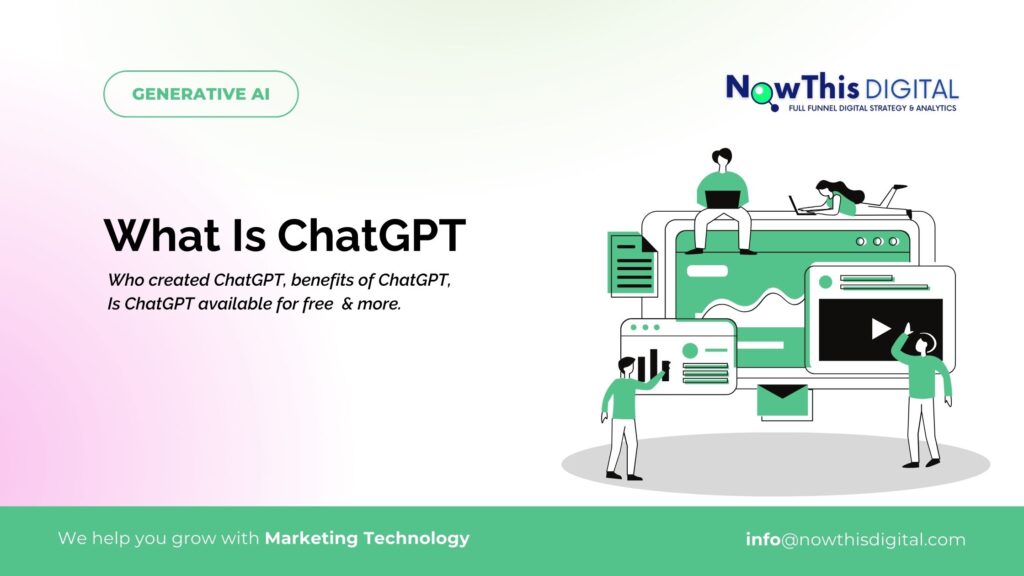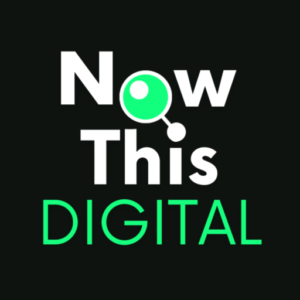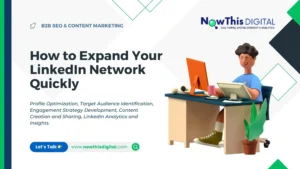What Is ChatGPT? why does it matter? Everything You Need to Know
ChatGPT, developed by OpenAI, represents a groundbreaking advancement in natural language processing (NLP) and artificial intelligence (AI). Launched as a successor to the popular GPT-3 model, ChatGPT is designed to engage in meaningful and coherent conversations with users across a wide range of topics. With its extensive training on diverse internet text, ChatGPT has the ability to understand and generate contextually relevant responses, making it a versatile tool for various applications.
One of the notable features of ChatGPT is its accessibility through OpenAI’s website, where users can create an account to interact with the model. The free version of ChatGPT allows users to input prompts or questions into the chat interface, receiving responses generated by the model. This has made it a valuable resource for students seeking assistance with homework, individuals looking for information on diverse topics, and professionals in need of quick insights or ideas.
However, the free version comes with certain limitations. The most significant constraint is its susceptibility to reaching maximum capacity during peak usage hours, resulting in potential access issues. To address this, OpenAI introduced ChatGPT Plus, a subscription service that offers enhanced features for a monthly fee. Subscribers to ChatGPT Plus enjoy benefits such as access to the GPT-4 model, faster response times, and uninterrupted availability, even during high-demand periods. This subscription model not only helps sustain the free availability of ChatGPT but also provides a premium experience for users seeking additional advantages.
In response to the growing popularity of ChatGPT, other tech giants have introduced their own innovative solutions. Google, for instance, announced Bard, a system that directly fetches information from the internet through Google searches to provide the latest and most up-to-date responses. Microsoft incorporated ChatGPT functionality into Bing, offering users a chat mode with more comprehensive capabilities, as its training data extends beyond the limitations of ChatGPT.
OpenAI has continually updated ChatGPT to enhance its capabilities and utility. In September 2023, a significant update was introduced, allowing ChatGPT to not only generate text but also to speak and recognize images. Users can now upload pictures, such as the contents of their refrigerator, and ChatGPT provides ideas for dinner. This interactive feature allows users to engage in step-by-step recipe generation based on available ingredients. Furthermore, ChatGPT can answer questions about images, such as identifying landmarks, providing a multifaceted conversational experience.
The introduction of voice interaction in ChatGPT further expanded its usability. Users can now engage with ChatGPT using their voices, similar to other voice assistants. This opens up new possibilities for natural and dynamic conversations, where users can request stories, ask trivia questions, or even seek entertainment through jokes. The voice update is available on both iOS and Android apps, providing a seamless experience across various platforms.
In November 2023, OpenAI introduced another major development, the rollout of GPTs. This feature allows users to customize their own version of ChatGPT for specific use cases. Users can create a GPT tailored to tasks such as scripting social media posts, code bug detection, or formulating product descriptions. The GPT builder enables users to input instructions and knowledge files, providing their custom GPT with context. Alongside this, OpenAI introduced the GPT store, allowing users to share and potentially monetize their custom bots. This move empowers users to adapt ChatGPT to their unique needs and preferences, fostering a community of shared resources and expertise.
Despite its advancements, ethical concerns surround the use of ChatGPT. Bias and fairness are critical issues, as the model may exhibit biases present in its training data, potentially leading to biased or unfair responses. OpenAI has implemented safety mitigations and encourages responsible use, but ongoing vigilance is necessary to address emerging ethical challenges associated with AI technologies.
Moreover, the potential for misinformation and the model’s lack of real-time information are concerns. While ChatGPT is a powerful tool for generating information, it is limited by the data available during its last training cut-off in January 2022. Users should exercise caution and verify critical information from reliable sources.
Privacy and security are additional ethical considerations. ChatGPT processes text-based input, potentially revealing sensitive information. OpenAI’s commitment to user privacy is emphasized, but users should remain mindful of the nature of the information shared.
In conclusion, ChatGPT stands as a remarkable achievement in the field of natural language processing and AI. Its versatility, accessibility, and continual updates have made it a valuable resource for users across diverse domains. The introduction of ChatGPT Plus, voice interaction, image recognition, and customizable GPTs further exemplifies OpenAI’s commitment to innovation and responsiveness to user needs. However, ethical concerns underscore the importance of responsible use and ongoing scrutiny of AI technologies. As ChatGPT continues to evolve, its impact on various industries and daily interactions remains a subject of fascination and scrutiny, highlighting the complex interplay between technology and ethics in the modern era.
What is ChatGPT?
ChatGPT is a state-of-the-art language model developed by OpenAI. It is part of the GPT (Generative Pre-trained Transformer) family, specifically based on the GPT-3.5 architecture. The “Chat” in ChatGPT indicates its focus on generating human-like responses in a conversational context.
Key features of ChatGPT include:
- Conversational AI: ChatGPT is designed to understand and generate natural language responses in a conversational manner. It excels at tasks like answering questions, engaging in dialogue, and providing contextually relevant information.
- Large-Scale Pre-training: Like its predecessors in the GPT series, ChatGPT is pre-trained on a vast amount of diverse internet text. This pre-training allows the model to capture the nuances of human language and generate coherent and contextually relevant responses.
- Versatility: ChatGPT is versatile and can be applied to various natural language processing tasks. It can be used for content generation, language translation, code generation, and more.
- Contextual Understanding: One of the strengths of ChatGPT is its ability to understand context. It can maintain context over a series of interactions, making it suitable for applications that require a more extended conversation.
- OpenAI Playground and API: OpenAI provides the OpenAI Playground, a web interface where users can interact with ChatGPT in real-time. Additionally, developers can access the OpenAI API to integrate ChatGPT into their own applications, products, or services.
Overall, ChatGPT represents a significant advancement in natural language processing and artificial intelligence, showcasing the potential for creating more human-like and context-aware conversational agents. It has practical applications in various domains, including customer support, content creation, and interactive user experiences.
Who created ChatGPT?
ChatGPT was developed by OpenAI, a San Francisco-based startup12. The team of researchers and engineers at OpenAI, led by Ilya Sutskever and Dario Amodei, can be attributed to the invention of ChatGPT3. Other prominent players involved in the founding of OpenAI include Elon Musk, Sam Altman, Peter Thiel, Jessica Livingston, and LinkedIn co-founder Reid Hoffman. The chatbot was launched on November 30, 20221. It’s based on a large language model and enables users to refine and steer a conversation towards a desired length, format, style, level of detail, and language1. By January 2023, it had become the fastest-growing consumer software application in history, gaining over 100 million users
How can you access ChatGPT?
Accessing ChatGPT is a breeze—just visit chat.openai.com and set up your OpenAI account.
The previous URL for the chatbot, chat.openai.com/chat, is still functional. OpenAI has streamlined the original URL for user convenience. After signing in, you can initiate conversations with ChatGPT. Begin your interaction by posing a question. Feel free to ask as many questions as you’d like.
Is there a ChatGPT app?
Yes, there’s an official ChatGPT app accessible to users on both iPhone and Android platforms.
When searching on the app store, ensure to download the application developed by OpenAI. Beware of numerous imitation apps on both the App Store and Play Store that lack affiliation with ChatGPT.
Is ChatGPT available for free?
Yes, ChatGPT is available for free. You can use it for engaging conversations, gain insights, automate tasks, and more. It’s available via the official website or the mobile app for Android and iOS. You can create a free account with your email address, Google account, or Microsoft account. As of the latest updates in November 2023, there are no usage limits on the free version of ChatGPT.
What kinds of questions can users ask ChatGPT?
Users can ask ChatGPT a wide range of questions and engage in conversations on various topics. Some examples of the types of questions and interactions include:
- Informational Queries:
- “Tell me about the history of Ancient Rome.”
- “What is the capital of France?”
- “Explain the process of photosynthesis.”
- Educational Assistance:
- “Help me understand the concept of quantum physics.”
- “Explain the Pythagorean theorem.”
- “What are the main causes of climate change?”
- Problem-Solving:
- “Suggest ways to improve time management.”
- “How can I troubleshoot a computer network issue?”
- “What are some effective study strategies?”
- Creative Writing Assistance:
- “Generate a short story about time travel.”
- “Help me come up with a catchy slogan for my business.”
- “Write a poem about nature.”
- Programming Help:
- “How do I use a for loop in Python?”
- “Explain the concept of object-oriented programming.”
- “What’s the difference between Java and JavaScript?”
- Language Translation:
- “Translate ‘hello’ to French.”
- “How do you say ‘goodbye’ in Spanish?”
- “What is the translation of ‘thank you’ in Japanese?”
- General Advice:
- “What are some tips for improving productivity?”
- “Give me advice on maintaining a healthy lifestyle.”
- “How can I prepare for a job interview?”
- Current Events and News:
- “What are the latest developments in space exploration?”
- “Tell me about recent advancements in renewable energy.”
- “What’s happening in the world of technology today?”
- Philosophical Questions:
- “What is the meaning of life?”
- “Discuss the ethics of artificial intelligence.”
- “Explore the concept of free will.”
- Casual Conversations:
- “Tell me a joke.”
- “What’s your favorite book?”
- “Do you have any pets?”
These examples illustrate the diverse range of questions and topics users can explore with ChatGPT. However, it’s important to note that ChatGPT generates responses based on patterns learned during training and may not always provide accurate or up-to-date information. Users should exercise critical thinking and fact-check when needed.
How are people using ChatGPT?
People are using ChatGPT in various ways across different domains. Some common use cases include:
- Learning and Education:
- Students and educators use ChatGPT to get explanations on academic topics, clarify concepts, and seek help with homework or assignments.
- Programming Assistance:
- Developers use ChatGPT to get help with coding problems, understand programming concepts, and receive suggestions for troubleshooting issues in their code.
- Content Generation:
- Writers and content creators use ChatGPT to generate ideas, brainstorm content, and even draft articles, stories, or marketing copy.
- Language Translation:
- Users leverage ChatGPT for quick language translation assistance, translating phrases or sentences from one language to another.
- General Information Retrieval:
- People ask ChatGPT for information on a wide range of topics, from historical events and scientific concepts to trivia and general knowledge.
- Casual Conversations and Entertainment:
- Users engage in casual conversations with ChatGPT, asking about its opinions on various topics, requesting jokes, or simply using it as a conversational partner for entertainment.
- Problem Solving and Advice:
- Individuals seek advice on personal issues, ask for problem-solving strategies, and explore general life tips or suggestions.
- Role-playing and Simulation:
- Some users engage in role-playing scenarios or use ChatGPT to simulate conversations with fictional characters for entertainment purposes.
- Idea Generation:
- Entrepreneurs, creatives, and innovators use ChatGPT to brainstorm ideas for projects, businesses, or creative endeavors.
- Accessibility Support:
- People with visual or motor impairments use ChatGPT as a text-based interface to access information or get assistance with tasks.
It’s important to note that while ChatGPT can be a valuable tool for a variety of purposes, users should exercise caution and critically evaluate the information provided, as it may not always be accurate or contextually appropriate. Additionally, OpenAI encourages responsible and ethical use of AI technologies.
What are the benefits of ChatGPT?
ChatGPT offers several benefits across different use cases:
- Information Access:
- Users can quickly access information on a wide range of topics, making it a valuable resource for learning and research.
- Educational Assistance:
- Students and learners can use ChatGPT to receive explanations, clarifications, and assistance with academic concepts and assignments.
- Programming Help:
- Developers can leverage ChatGPT for coding assistance, troubleshooting, and gaining insights into programming concepts.
- Content Generation:
- Writers and content creators can use ChatGPT for idea generation, content brainstorming, and even drafting written material.
- Language Translation:
- Users can obtain quick translations of phrases or sentences from one language to another, aiding communication across language barriers.
- Problem Solving and Advice:
- Individuals can seek advice on various topics, explore problem-solving strategies, and receive general life tips.
- Entertainment and Casual Conversations:
- Users can engage in casual conversations, ask for jokes, or use ChatGPT as a conversational partner for entertainment.
- Idea Generation:
- Entrepreneurs, creatives, and innovators can use ChatGPT to brainstorm ideas for projects, businesses, or creative endeavors.
- Accessibility Support:
- People with visual or motor impairments can use ChatGPT as a text-based interface to access information or receive assistance.
- Conversational AI Development:
- Developers and researchers can use ChatGPT as a tool to explore and experiment with natural language understanding and generation, contributing to the advancement of conversational AI technologies.
While ChatGPT has many benefits, users should also be aware of its limitations, including the potential for generating inaccurate or biased information, sensitivity to input phrasing, and a lack of understanding of real-time events or updates. Responsible and critical use of ChatGPT is important to ensure accurate and reliable outcomes.
What are the limitations of ChatGPT? How accurate is it?
ChatGPT has some limitations, and it’s essential for users to be aware of them:
- Lack of Real-Time Information:
- ChatGPT does not have access to real-time information and is not aware of current events or developments that occurred after its last training cut-off in January 2022.
- Potential for Inaccuracies:
- The model may generate information that is inaccurate, outdated, or contextually incorrect. Users should verify critical information from reliable sources.
- Sensitivity to Input Phrasing:
- The model’s responses can be sensitive to slight changes in input phrasing. A small modification in a question may lead to different or inconsistent answers.
- Tendency to Guess User Intent:
- ChatGPT may guess the user’s intent rather than seeking clarification for ambiguous queries. This can result in responses that may not precisely address the user’s intended meaning.
- Limited Depth of Conversation:
- The model may exhibit limitations in maintaining context over extended conversations and might provide responses that appear to be coherent but lack a deep understanding of the conversation’s context.
- Potential for Biased Responses:
- ChatGPT may generate biased responses based on the biases present in the training data. Efforts have been made to mitigate biases, but biases may still exist.
- Inability to Ask Clarifying Questions:
- Unlike humans, ChatGPT cannot ask clarifying questions for ambiguous queries, leading to potential misunderstandings.
- Possible Offensive Content:
- The model might generate responses that are inappropriate or offensive. OpenAI has implemented safety mitigations, but it may not be foolproof.
- Not a Source of Professional Advice:
- ChatGPT should not be used as a substitute for professional advice. Its responses are based on patterns in data and not on individual circumstances.
- No Memory of Previous Queries:
- ChatGPT doesn’t have a memory of past interactions within a conversation. Each query is treated in isolation, which may impact the coherence of conversations.
OpenAI has taken steps to address these limitations, and the model has undergone safety mitigations and improvements. Users are encouraged to provide feedback on problematic outputs through the user interface to help refine and enhance the system further. Additionally, OpenAI has released more advanced models, such as ChatGPT-4, which aim to address some of these limitations.
What are the ethical concerns associated with ChatGPT?
While ChatGPT has the potential to assist with various tasks, ethical concerns arise depending on its usage. These concerns encompass issues such as bias, lack of privacy and security, and the potential for dishonest practices in education and work.
Unethical Use and Cheating: ChatGPT’s humanlike capabilities open the door to unethical practices like cheating, impersonation, and the dissemination of misinformation. Educators are particularly concerned about students using ChatGPT to cheat on assignments and papers. Notably, CNET garnered attention for employing ChatGPT to generate articles containing errors.
OpenAI introduced an AI text classifier to distinguish between human- and AI-generated text to combat cheating and plagiarism. However, the tool was later withdrawn due to a reported “low rate of accuracy.” Various online tools, such as Copyleaks or Writing.com, are available to assess the likelihood of text being AI-generated. OpenAI is also considering adding watermarks to longer text pieces to help identify AI-generated content.
Cybersecurity Risks: ChatGPT’s ability to generate code raises cybersecurity concerns, as threat actors could exploit it to create malicious software. Although OpenAI addressed this issue by preventing requests for creating malware, threat actors may attempt to circumvent OpenAI’s safety measures.
Impersonation and Privacy Issues: The model’s capability to mimic writing styles allows it to impersonate individuals, posing a risk for collecting sensitive information or spreading disinformation. Additionally, the text-based input used by ChatGPT has the potential to disclose sensitive information, and the model’s output could be used to track and profile individuals.
Bias in Training Data: ChatGPT’s ethical concerns also stem from biases present in its training data, which may result in biased model outputs. The model may not comprehend offensive or discriminatory language. Reviewing and diversifying the training data can mitigate bias and contribute to more accurate results.
Impact on Jobs and Human Interaction: There are concerns that as technology evolves, ChatGPT might automate tasks traditionally performed by humans, potentially leading to job displacement. However, proponents argue that ChatGPT can complement human work, offering support for job functions and creating new opportunities.
Privacy Issues: ChatGPT’s reliance on text-based input raises privacy concerns, as it could potentially reveal sensitive information. Moreover, the model’s output may be used to track and profile individuals, with collected information associated with users’ phone numbers and email addresses, stored indefinitely.
Accessing ChatGPT: To access ChatGPT, users must create an OpenAI account and visit chat.openai.com. After signing up, users can input prompts or questions on the ChatGPT homepage. The platform offers various options, including entering different prompts for new queries, regenerating responses, sharing responses, liking or disliking responses, and copying responses.
Capacity and Subscription Option: While ChatGPT can handle numerous users, it may occasionally reach maximum capacity during peak hours. Users can try accessing it at different times, refreshing the browser, or opting for ChatGPT Plus, a subscription service that typically remains available even during high-demand periods.
How can you access ChatGPT?
To use ChatGPT, start by setting up an OpenAI account. Visit chat.openai.com and choose “Sign Up,” where you can input your email address or log in using your Google or Microsoft account.
Once registered, navigate to the ChatGPT homepage and input a prompt or question into the message box. Users have the following options:
- Input a new prompt for a fresh query or seek clarification.
- Generate a new response.
- Share the response.
- Indicate preference by liking or disliking the response using the thumbs-up or thumbs-down option.
- Copy the response.
What to do if ChatGPT is at capacity
ChatGPT has the capability to accommodate a large number of users simultaneously, there are instances when it may reach maximum capacity due to high demand. This typically occurs during peak hours, which can vary depending on the time zone, such as early morning or evening.
If ChatGPT is at capacity, consider trying to access it at different times or refreshing your browser. An alternative solution is to subscribe to ChatGPT Plus, a subscription service that is generally consistently available, even during periods of elevated demand.
Is ChatGPT free?
ChatGPT is accessible for free on OpenAI’s website, and users can register for a complimentary OpenAI account. However, there is an optional upgrade called ChatGPT Plus, offering enhanced features and benefits for a subscription fee of $20 per month.
The ChatGPT Plus subscription provides users with access to GPT-4, faster response times, unrestricted availability without blackout windows, and priority access to new features. This premium membership ensures uninterrupted access to ChatGPT even during peak usage periods when capacity limitations might affect the free version.
For users relying on the free version, the primary limitation is encountering access restrictions when ChatGPT is at capacity. In contrast, ChatGPT Plus eliminates such limitations, providing subscribers with uninterrupted access to the platform.
What are the alternatives to ChatGPT?
Due to ChatGPT’s widespread popularity, it frequently experiences unavailability issues due to high demand. Responding to ChatGPT’s influence, Google has introduced Bard, a system that directly fetches information from the internet through Google searches, ensuring users receive the latest and most up-to-date information.
Microsoft has integrated ChatGPT functionality into Bing, providing the search engine with a chat mode for users. Notably, Bing’s ChatGPT functionality boasts more comprehensive capabilities, as its training data is current and extends beyond the limitations of ChatGPT, which concludes with data and events from 2021.
Several alternatives to ChatGPT are available in the realm of text generation, offering various features and capabilities. Some of these alternatives include:
- AI-Writer.
- Article Forge.
- ChatSonic.
- Copysmith.
- DeepL Write.
- Google Bard.
- Jasper.
- Magic Write.
- Open Assistant.
- Peppertype.
- Perplexity AI.
- Spellbook.
- Rytr.
- YouChat.
For those interested in coding alternatives to ChatGPT, several platforms and tools are available, such as:
- AlphaCode.
- Amazon CodeWhisperer.
- CodeStarter.
- CodeWP.
- Cody.
- Enzyme.
- Ghostwriter.
- GitHub Copilot.
- Mutable.ai.
- OpenAI Codex.
- Seek.
- Tabnine.
These alternatives cater to a diverse range of needs and preferences in both text generation and coding assistance.
ChatGPT updates
In August 2023, OpenAI introduced an enterprise edition of ChatGPT, featuring the advanced GPT-4 model known for its higher speed and an extended context window. This enterprise version comes with customization options, allowing organizations to tailor ChatGPT to their specific needs. Notably, this iteration prioritizes data security by ensuring that user data remains within the organization and is not shared externally.
Following this, in September 2023, OpenAI unveiled a significant update for ChatGPT, enabling it to handle both speech and image recognition. Users can now upload images, such as the contents of their refrigerator, and ChatGPT will provide dinner ideas. Additionally, users can engage in interactive sessions to receive step-by-step recipes using the ingredients they have. ChatGPT can answer questions about images, such as identifying landmarks, and engage in conversations to provide facts and historical information.
This update also introduces voice interaction capabilities, allowing users to communicate with ChatGPT using their voices, similar to other voice assistants. Users can engage in conversations, requesting stories, trivia, jokes, and more. The voice feature will be available on both iOS and Android apps, and users can opt-in through their settings. The image recognition capability will be accessible across all platforms, including apps and ChatGPT’s website.
In November 2023, OpenAI announced the launch of GPTs, enabling users to create customized versions of ChatGPT tailored to specific use cases. Users can design GPTs specialized in tasks like scripting social media posts, code bug detection, or formulating product descriptions. The GPT builder allows users to input instructions and knowledge files to provide context for their custom GPTs. OpenAI also introduced the GPT store, allowing users to share and potentially monetize their unique custom bots. This move enhances the versatility and adaptability of ChatGPT for various applications and user preferences.
Read Also:































